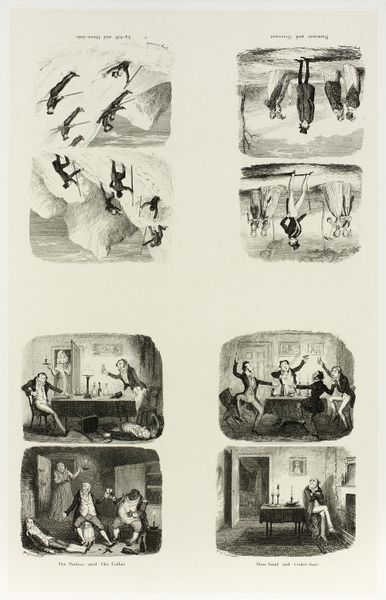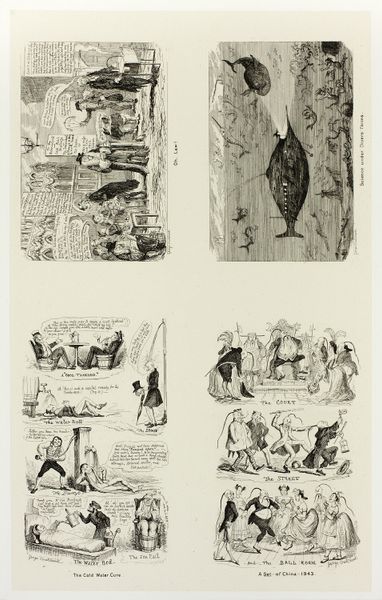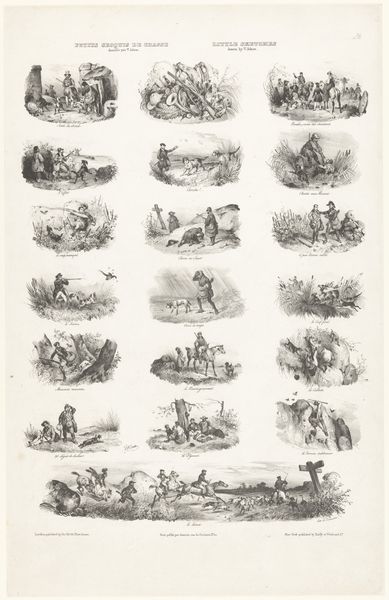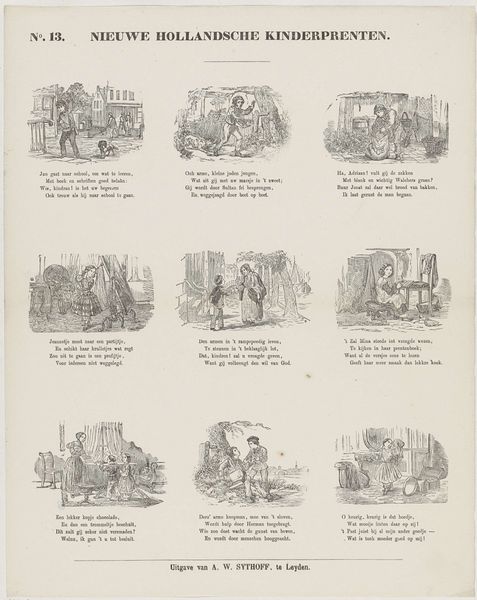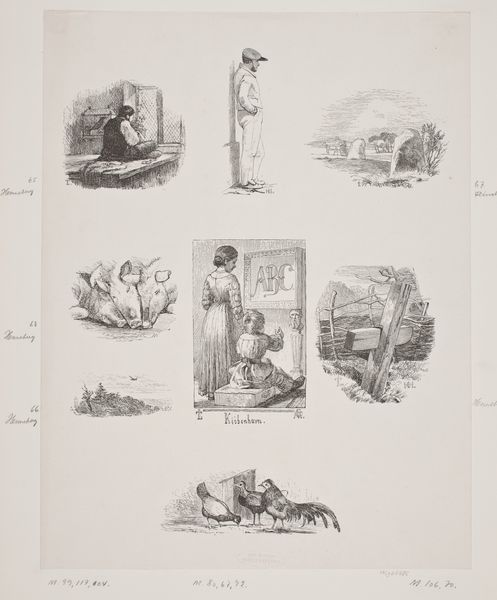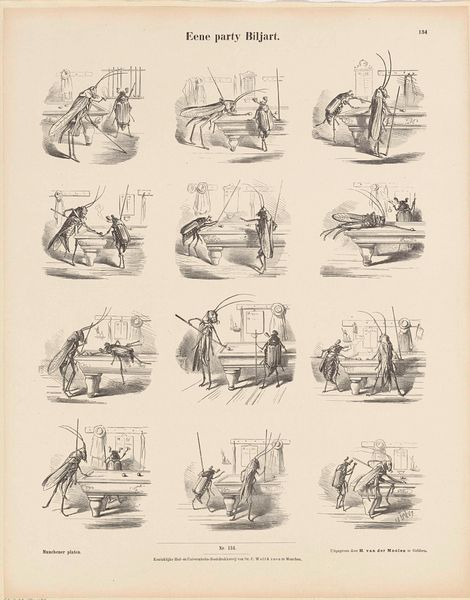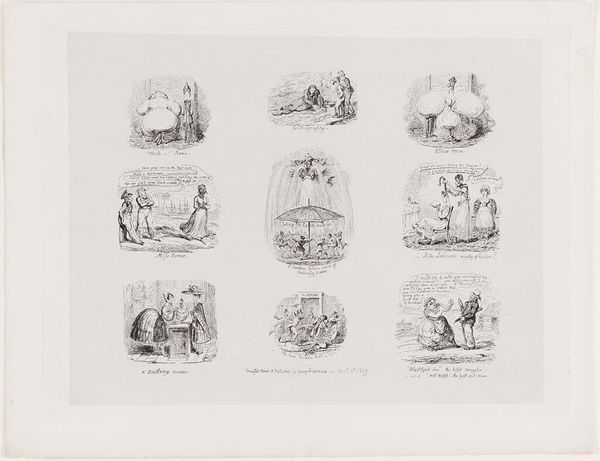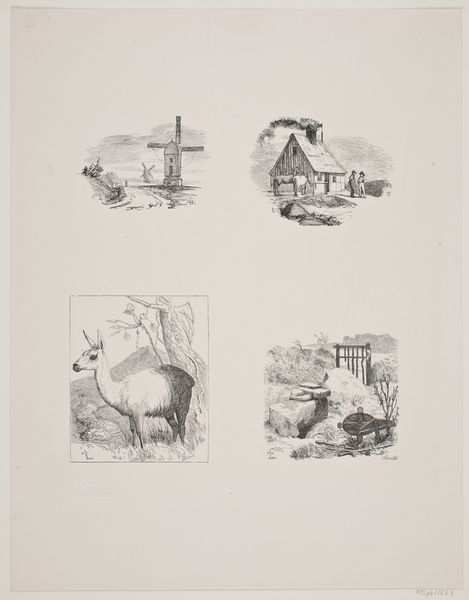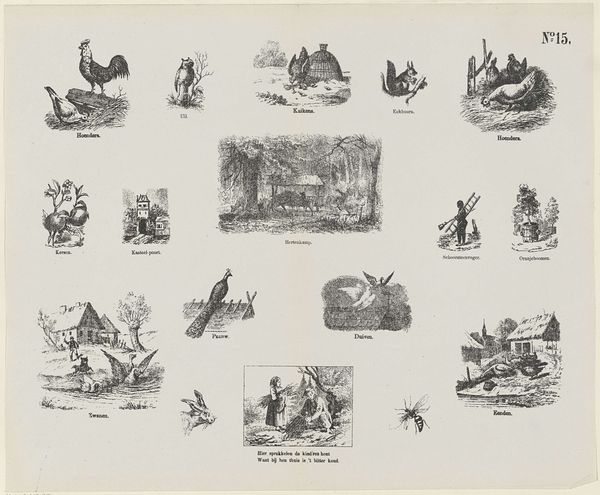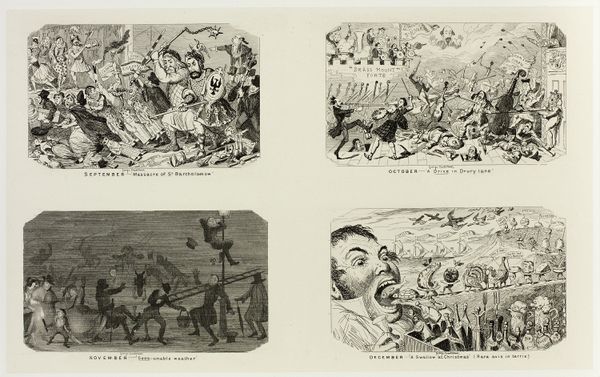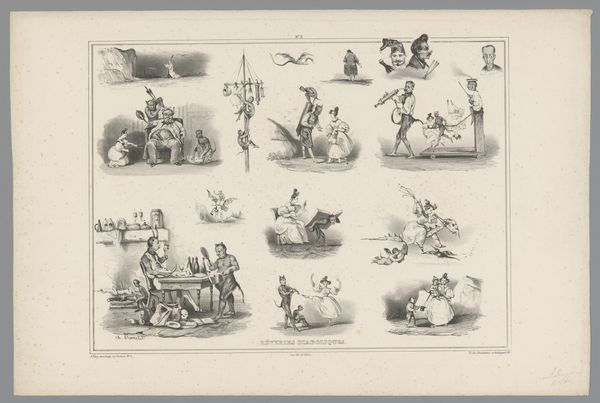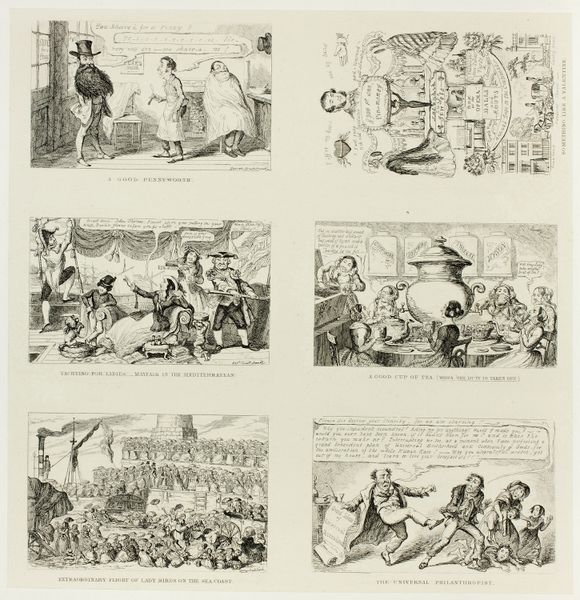
High and Low Water from George Cruikshank's Steel Etchings to The Comic Almanacks: 1835-1853 (top left) c. 1842 - 1880
0:00
0:00
drawing, print, etching, paper
#
drawing
#
narrative-art
# print
#
etching
#
caricature
#
paper
#
sketchwork
#
genre-painting
Dimensions: 337 × 212 mm (primary support); 507 × 341 mm (secondary support)
Copyright: Public Domain
George Cruikshank's etching, "High and Low Water," produced between 1835 and 1853, presents us with a stark dichotomy of fortune, rendered in the sharp contrasts of black ink on white paper. The composition is neatly divided into a series of vignettes, each a microcosm of societal conditions. Cruikshank masterfully employs line and texture to differentiate between the upper echelons, depicted in scenes of leisure and privilege, and the lower classes, struggling against adversity. The upper classes are high above in their ivory towers, while the lower classes are on the street, in the mud, and in the rain. The artist's strategic use of space further accentuates this divide, with ample room afforded to the wealthy and cramped, chaotic arrangements for the poor. This deliberate formal structuring serves not merely to illustrate social disparities but to critique them, highlighting the systemic inequalities inherent in 19th-century British society. The power of Cruikshank's etching lies in its ability to destabilize established meanings through visual language. It prompts us to question the values and structures that perpetuate such vast differences in experience, acknowledging the artwork as an ongoing site of interpretation and social commentary.
Comments
No comments
Be the first to comment and join the conversation on the ultimate creative platform.
